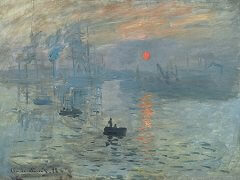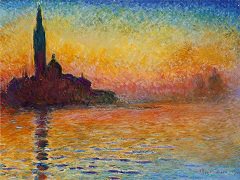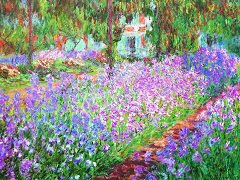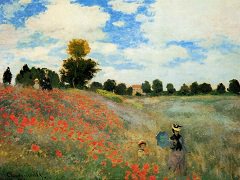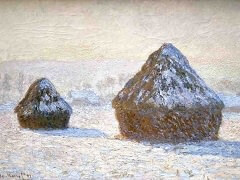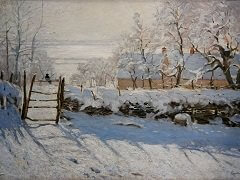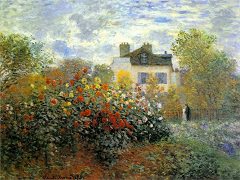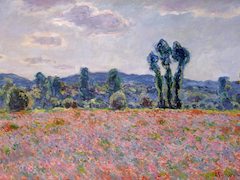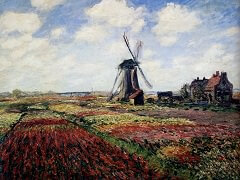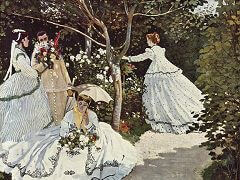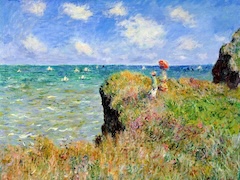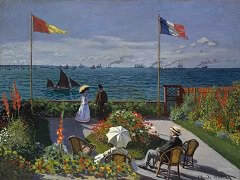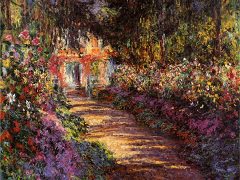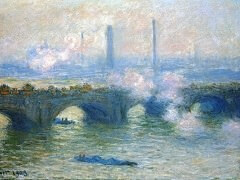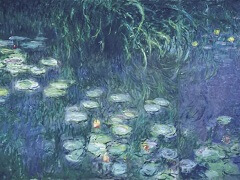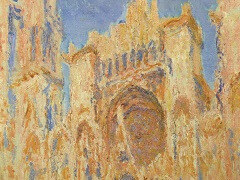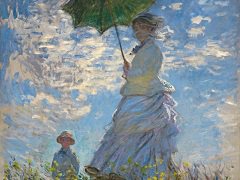Houses of Parliament, 1904 by Claude Monet
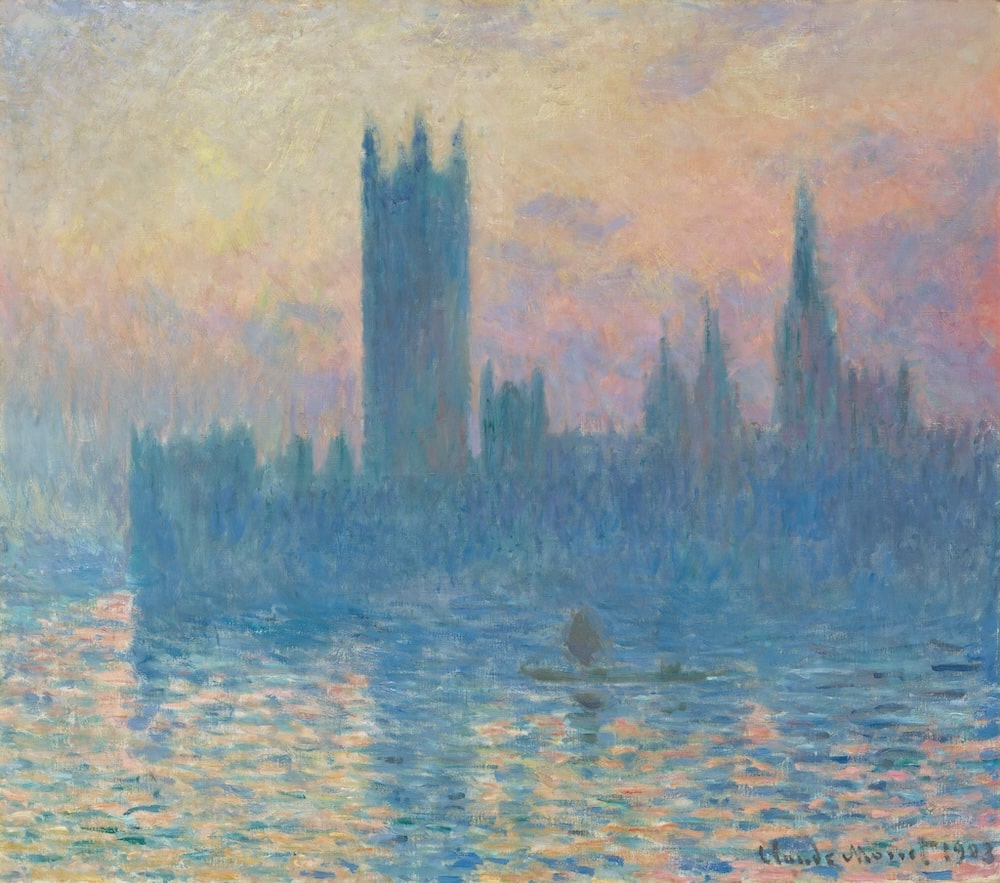
Claude Monet painted a series of paintings of the Palace of Westminster, home of the British Parliament, during his stays in London between the years 1900-1905. The paintings have all the same size and viewpoint, Monet's window at St Thomas' Hospital overlooking the Thames. They are however painted at different times of the day and at different weather circumstances.
Here Monet is concentrating on the cumulative atmosphere created when architecture is placed near water and suffused with an eerie light. The Gothic spires of the Houses of Parliament have almost succeeded in piercing through the fog, but they are still reduced to a vague image that does not create a strong reflection in the water. The sun and its reflection cast a warm glow upon the scene and provide two focal points; one at the top of the painting and another at the bottom. The whole work adheres to Monet's aesthetic principles of being pleasing to the eye.
By now Monet had abandoned his earlier working practice of completing a painting on the spot in front of the motif. He carried on refining the images back in France, and sent to London for photographs to help in this. This caused some adverse reaction, but Monet's reply was that his means of creating a work was his own business, and it was up to the viewer to judge the final result.

